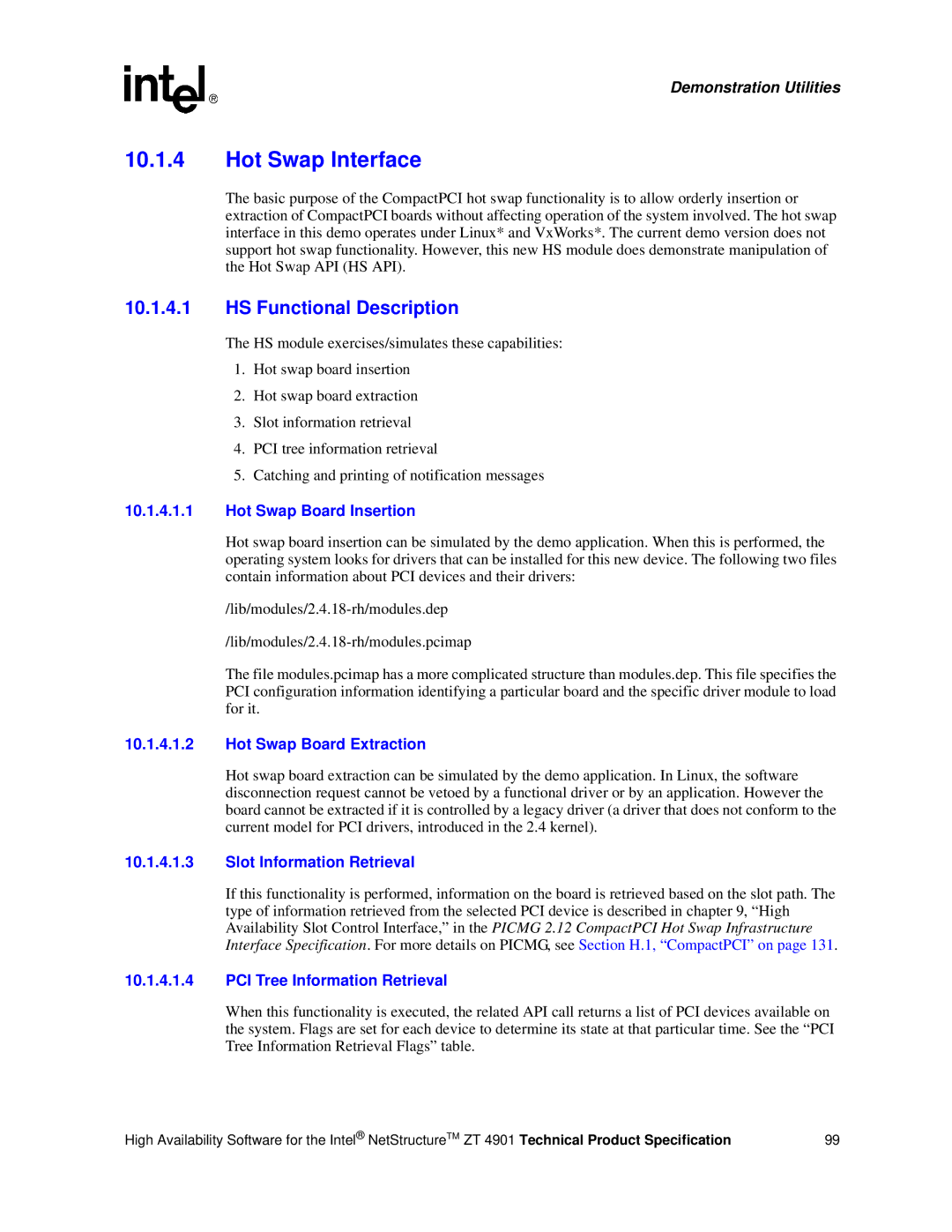Demonstration Utilities
10.1.4Hot Swap Interface
The basic purpose of the CompactPCI hot swap functionality is to allow orderly insertion or extraction of CompactPCI boards without affecting operation of the system involved. The hot swap interface in this demo operates under Linux* and VxWorks*. The current demo version does not support hot swap functionality. However, this new HS module does demonstrate manipulation of the Hot Swap API (HS API).
10.1.4.1HS Functional Description
The HS module exercises/simulates these capabilities:
1.Hot swap board insertion
2.Hot swap board extraction
3.Slot information retrieval
4.PCI tree information retrieval
5.Catching and printing of notification messages
10.1.4.1.1Hot Swap Board Insertion
Hot swap board insertion can be simulated by the demo application. When this is performed, the operating system looks for drivers that can be installed for this new device. The following two files contain information about PCI devices and their drivers:
The file modules.pcimap has a more complicated structure than modules.dep. This file specifies the PCI configuration information identifying a particular board and the specific driver module to load for it.
10.1.4.1.2Hot Swap Board Extraction
Hot swap board extraction can be simulated by the demo application. In Linux, the software disconnection request cannot be vetoed by a functional driver or by an application. However the board cannot be extracted if it is controlled by a legacy driver (a driver that does not conform to the current model for PCI drivers, introduced in the 2.4 kernel).
10.1.4.1.3Slot Information Retrieval
If this functionality is performed, information on the board is retrieved based on the slot path. The type of information retrieved from the selected PCI device is described in chapter 9, “High Availability Slot Control Interface,” in the PICMG 2.12 CompactPCI Hot Swap Infrastructure Interface Specification. For more details on PICMG, see Section H.1, “CompactPCI” on page 131.
10.1.4.1.4PCI Tree Information Retrieval
When this functionality is executed, the related API call returns a list of PCI devices available on the system. Flags are set for each device to determine its state at that particular time. See the “PCI Tree Information Retrieval Flags” table.
High Availability Software for the Intel® NetStructureTM ZT 4901 Technical Product Specification | 99 |
